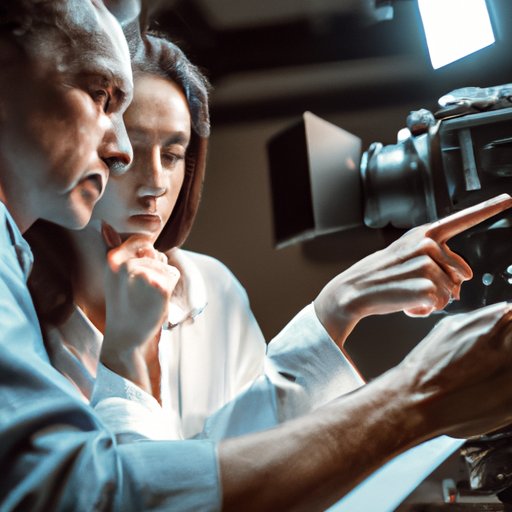
Introduction
Film treatments are an essential part of the filmmaking process. The document serves as a blueprint that provides a detailed description of what the final product will look like. As a filmmaker, if you are looking to turn your ideas into reality, it is essential that you understand the role that treatments play in the production of a film.
The art of filmmaking: Understanding the importance of treatment
The art of filmmaking is a complex process that involves many moving parts. From ideation to the final cut, each step of the process requires careful consideration and planning. Treatments are an essential part of this process as they serve as a clear roadmap that guides filmmakers towards the final product.
These documents are essential as they help the filmmaker to stay focused on the primary idea, prevent the production from veering off course and keep everyone working towards the same goal.
Lights, Camera, Treatment: What it is and why it matters
A treatment in film is a document that provides a detailed summary of the storyline, characters, location, and the overall feel of the film. Treatments vary in length, but they are usually 5-30 pages long. They are an essential tool that filmmakers use to pitch their ideas to studios, producers, and investors to get the necessary funding for the production of the film.
The treatment serves as a guidebook for the filmmaker and everyone else involved in the production. It is a summary of the vision and an essential document that enables everyone to stay on the same page.
The primary role of the treatment is to outline the story and provide a visual representation of what the film should look like. One of the critical aspects of a treatment is that it helps to illustrate the creative intent of the filmmaker, allowing the potential investors or other creators to view the project they are about to invest in or work on through the eyes of the filmmakers.
From Script to Screen: The role of treatment in film production
The entire filmmaking process involves many stages, from ideation to planning, scripting, pre-production, filming, post-production, and finalizing the film for distribution. Treatments play a crucial role in bringing the script to life. They are the bridge between the script and the final product, providing a visual representation of what the film should look and feel like.
A successful treatment is the result of collaboration and communication between the writer and the director. The treatment is used to entice producers, investors, and the production team into believing in the vision of the filmmakers.
Some famous films have benefited from well-crafted treatments. The most popular being Star Wars, which was initially pitched to studios using a treatment that George Lucas had written. The treatment was used to sell the idea of the film to producers, and it eventually became one of the most successful films in history.
The anatomy of a film treatment: Exploring the building blocks
A complete treatment has several essential elements that are vital for its success. These elements include the logline, the synopsis, the characters, and the locations. When craftily prepared, a treatment should give the reader an accurate image of the story or concept being presented.
The logline is the one-line summary of the story that should be able to grab the attention of the reader and give them an idea of what to expect in the ensuing pages. The synopsis expands on the logline and should summarize the drama, complexity, and the nuances of the story.
The characters should be fully fleshed out, and the treatment should give an insight into their personalities, conflicts, and arcs. The locations and settings should be well defined, and the reader should be able to paint a mental image of the places described in the treatment.
The magic behind the scenes: How a treatment sets the tone for a great film
The beauty of a treatment lies in the creative license that the filmmaker has to experiment and explore new ideas without having to commit to them fully. A well-crafted treatment provides the filmmaker with the freedom to explore the many creative choices that they have and discover the one that works best.
The treatment serves as the creative compass that guides the entire filmmaking process and serves as a reminder of the vision that the filmmaker has for the project. It sets the tone for the entire production and ensures that everyone involved in the project is working towards a common goal.
Additionally, a treatment can elevate the final product by setting the bar high and ensuring that the creative vision is clear and concise. A clear vision increases the chances of success and allows the filmmakers to achieve their creative goals.
Conclusion
Treatments are an essential part of modern filmmaking and are the starting point for many popular movies. They are the creative compass that guides the entire filmmaking process and ensures that everyone involved is working towards a common goal. So, if you are looking to turn your filmmaking ideas into reality, a great treatment is an important place to start.
To ensure that your treatment is successful, ensure that it includes all of the essential elements, is well-structured and provides room for experimentation and creativity. By doing this, you’re more likely to create a compelling and engaging film that audiences will love.





